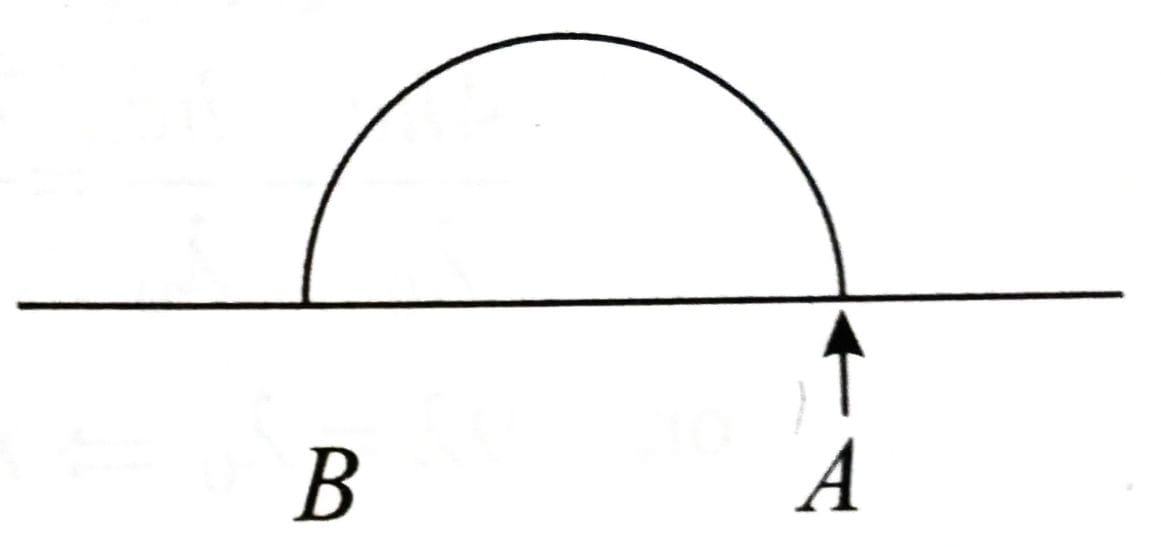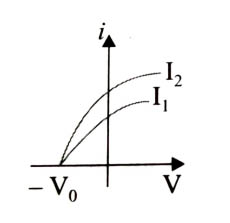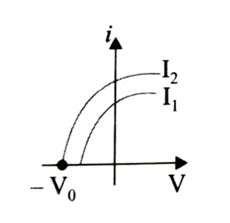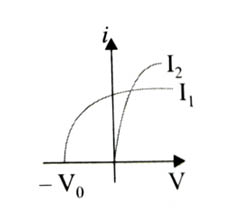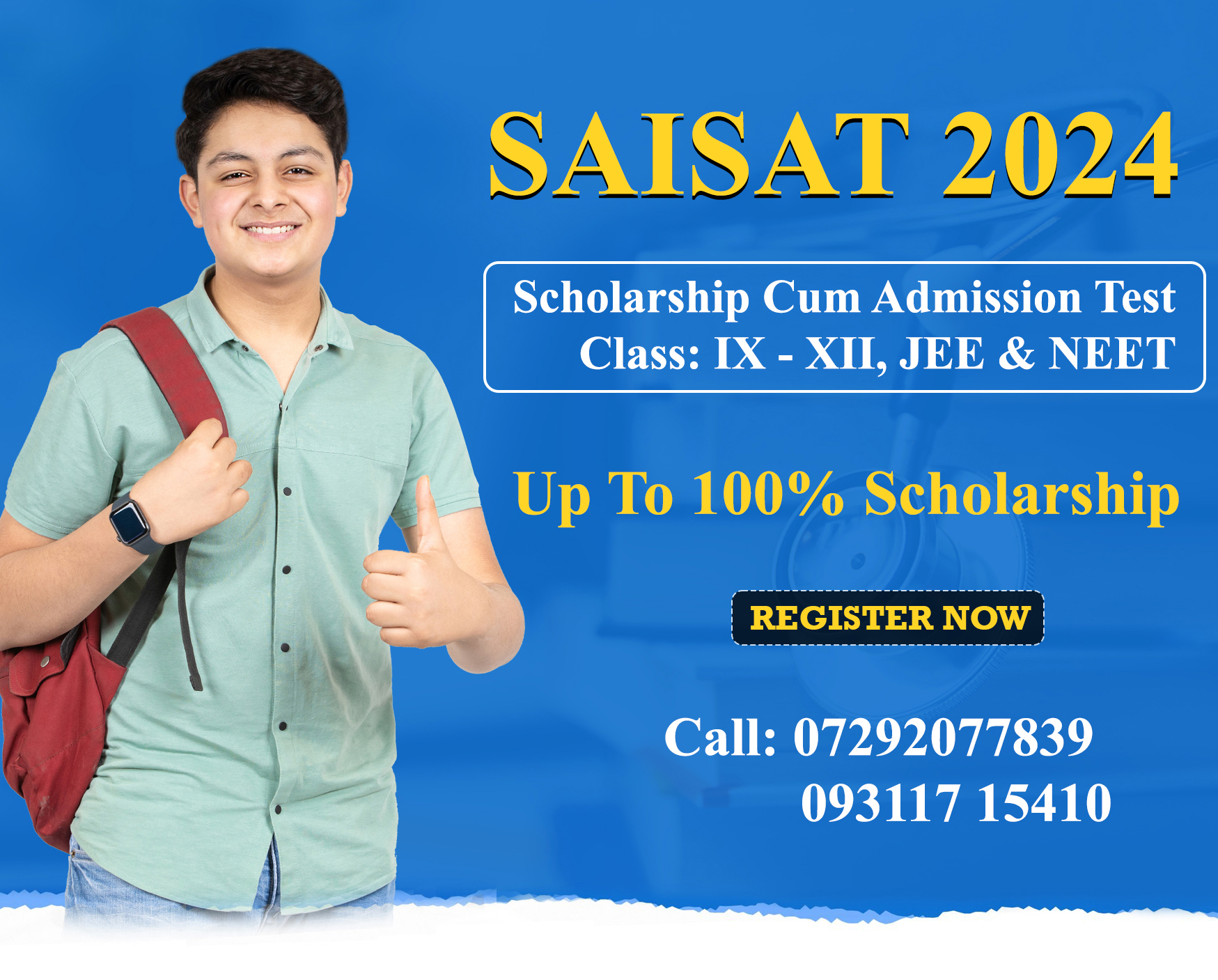Topic Question Set
Q 11
:
Which figure shows the correct variation of applied potential difference (V) with photoelectric current (i) at two different intensities of light () of same wavelengths? [2024]
(1)
Saturation current depends on intensity of incident light.
Also, according to question, both have same wavelength.
Hence stopping potential will remain same, it means will be same.
Since , hence saturation current corresponding to will be greater than that corresponding to .
Q 12
:
Given below are two statements:
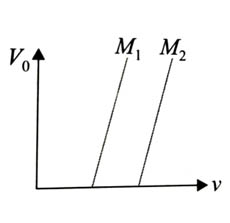
Statement I: Figure shows the variation of stopping potential with frequency (ν) for the two photosensitive materials and . The slope gives value of , where h is Planck’s constant, e is the charge of an electron.
Statement II: will emit photoelectrons of greater kinetic energy for the incident radiation having the same frequency.
In the light of the above statements, choose the most appropriate answer from the options given below. [2024]

Statement I is incorrect but Statement II is correct
Both Statement I and Statement II are incorrect
Both Statement I and Statement II are correct
Statement I is correct and Statement II is incorrect
(4)
slope =
Work function of is higher than so kinetic energy of emitted electron is less for
Q 13
:
For the photoelectric effect, the maximum kinetic energy () of the photoelectrons is plotted against the frequency () of the incident photons as shown in the figure. The slope of the graph gives [2024]
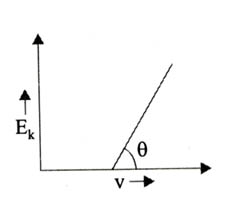

Ratio of Planck’s constant to electric charge
Work function of the metal
Charge of electron
Planck’s constant
(4)
We know that
Slope of kinetic energy versus frequency curve will be equal to slope
Q 14
:
The work functions of cesium (Cs) and lithium (Li) metals are 1.9 eV and 2.5 eV, respectively. If we incident a light of wavelength 550 nm on these two metal surfaces, then photo-electric effect is possible for the case of [2025]
Li only
Cs only
Neither Cs nor Li
Both Cs and Li
(2)
E (energy of incident photon)
Only cesium will show photoelectric effect.
Q 15
:
A light source of wavelength illuminates a metal surface and electrons are ejected with maximum kinetic energy of 2 eV. If the same surface is illuminated by a light source of wavelength , then the maximum kinetic energy of ejected electrons will be (The work function of metal is 1 eV) [2025]
2 eV
6 eV
5 eV
3 eV
(3)
Einstein's photoelectric equation
Q 16
:
In photoelectric effect an em-wave is incident on a metal surface and electrons are ejected from the surface. If the work function of the metal is 2.14 eV and stopping potential is 2 V, what is the wavelength of the em-wave?
(Given hc = 1242 eVm where h is the Planck's constant and c is the speed of light in vacuum.) [2025]
400 nm
600 nm
200 nm
300 nm
(4)
Using photoelectric equation
2 eV = E – 2.14 eV E = 4.14 eV
Q 17
:
In photoelectric effect, the stopping potential () v/s frequency () curve is plotted.
(h is the Planck's constant and is work function of metal)
(A) v/s is linear
(B) The slope of v/s curve =
(C) h constant is related to the slope of v/s line
(D) The value of electric charge of electron is not required to determine h using the v/s curve.
(E) The work function can be estimated without knowing the value of h.
Choose the correct answer from the options given below: [2025]
(A), (B) and (C) only
(C) and (D) only
(A), (C) and (E) only
(D) and (E) only
(3)
So slope is constant
and intercept is
Option (A) is correct, Option (B) is wrong.
Option (C) is correct, option (D) is wrong.
Option (E) is correct.
(A), (C) and (E) are correct.
Q 18
:
Given below are two statements: One is labelled as Assertion (A) and the other is labelled as Reason (R).
Assertion(A) : Emission of electrons in photoelectric effect can be suppressed by applying a sufficiently negative electron potential to the photoemissive substance.
Reason (R) : A negative electric potential, which stops the emission of electrons from the surface of a photoemissive substance, varies linearly with frequency of incident radiation.
In the light of the above statements, choose the most appropriate answer from the options given below: [2025]
(A) is false but (R) is true.
(A) is true but (R) is false.
Both (A) and (R) are true and (R) is the correct explanation of (A).
Both (A) and (R) are true but (R) is Not the correct explanation of (A).
(4)
Negative potential will slow the electrons and if it is sufficient, it will make the photocurrent zero.
Q 19
:
In an experiment with photoelectric effect, the stopping potential. [2025]
increases with increase in the wavelength of the incident light.
increases with increase in the intensity of the incident light.
is times the maximum kinetic energy of the emitted photoelectrons.
decreases with increase in the intensity of the incident light.
(3)
From Einstein photoelectric equation
Maximum K.E.
So,
Q 20
:
A monochromatic light is incident on a metallic plate having work function . An electron, emitted normally to the plate from a point A with maximum kinetic energy, enterss a constant magnetic field, perpendicular to the initial velocity of electron. The electron passes through a curve and hits back the plate at a point B. The distance between A and B is
(Given: The magnitude of charge of an electron is e and mass is m, h is Planck's constant and c is velocity of light. Take the magnetic field exists throughout the path of electron) [2025]
(3)
